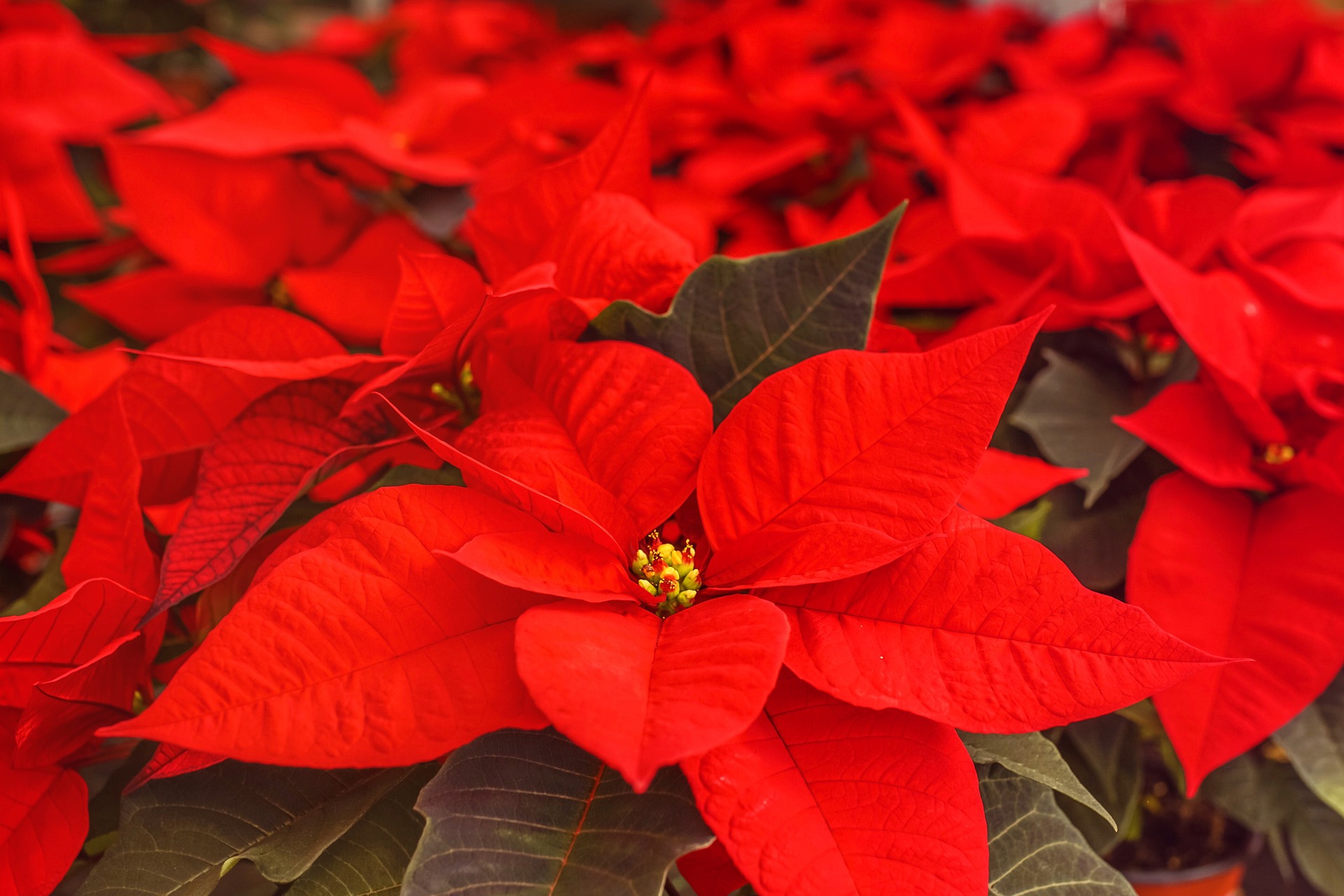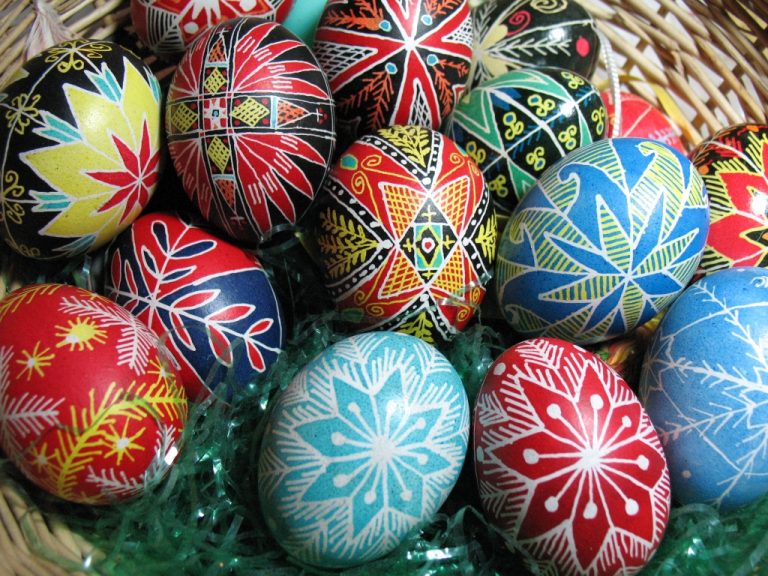Whether you celebrate Christmas or not, you are certainly familiar with some of the many plants associated with this holiday. From the original Christmas gifts of frankincense and myrrh to the 70 million festive poinsettias that are sold each year in the U.S. — Christmas botanicals are an essential component of the holiday spirit.
A handful of specific trees, herbs, flowers and fruits contribute to a bright holiday season, each with its own legend that brought about today’s traditions.
Christmas gifting began with botanicals

Frankincense and myrrh were among the three valuables gifted to the baby Jesus by the wise men. Frankincense, the fragrant resin from scrubby desert trees in the genus Boswellia, has been used for ceremonial purposes for thousands of years. This soothing and healing botanical is symbolic of holiness and righteousness; and the offering hinted that Jesus would be no ordinary king.
Myrrh, a similar resin from small thorny trees of the genus Commiphora, is an astringent medicinal historically used in death and burial preparations. Symbolic of anguish and bitterness, this gift foreshadowed Christ’s great suffering, and it is said that he was sedated with myrrh-infused wine before his crucifixion.
These two resins were worth more than gold at the time of Christ’s birth, and it is likely that they funded the family’s journey to Egypt. While their relative value has diminished as they became more readily available, they set a precedent for giving valuable presents on Christmas Day.

The yule log and living trees
Success
You are now signed up for our newsletter
Success
Check your email to complete sign up
The cheerful and cozy yule log traditionally burned on the hearth at Christmas time actually originated long before Christmas was celebrated. Yule was a pagan holiday centered on the winter solstice and celebrated throughout Germanic Europe.
Starting with the solstice, one portion of a large oak, ash, pine or birch log was burned for approximately 12 consecutive nights, providing light and warmth when it was most needed. The remains were kept for good luck in the coming year, while the ashes were used to fertilize the garden.
The tradition lent itself well to the 12 days of Christmas, the period between Christ’s birth and the coming of the wise men, or magi. While most of us don’t have fireplaces to burn an actual yule log these days, sections of white birch are often sold as decorative holiday candle holders.
A sweet, edible version of the yule log appeared in the middle ages, which was later embellished by Parisian chefs to become a popular Christmas dessert.
Living trees
While the custom of bringing greenery into the home was also of pagan origin — as a reminder of greener days ahead; pine is one of the plants believed to have offered shelter to the Holy family during their flight from Jerusalem to Egypt.
It is said that, when Mary was very tired, an old pine tree invited them inside its hollow trunk to rest, hiding them from Herod’s baby-killing soldiers. When they departed, baby Jesus blessed the old tree with his hand, leaving a tiny handprint that can still be seen in bisected pinecones as an enduring sign of gratitude.
Holly, with its spiny leaves and bright, poisonous berries, has always been considered powerful and protective. In ancient Rome, it was seen as the sacred plant of Saturn, their god of agriculture.
A pagan tradition of decorating with “boughs of holly” to ward off evil during the darkest time of the year carried over to Christmas, with a significant transfer of symbolism. Christians see holly as a reminder of Christ’s suffering for mankind’s sins, with the spiny leaves symbolizing His crown of thorns, and the red berries symbolizing His blood.
Fir was designated a suitable Christmas tree in 723 by the English Saint Boniface, who was spreading Christianity in Germany and found the pagan rituals to be ungodly. The shape, he said, pointed toward heaven, and the enduring color symbolized immortality. Although another seven centuries passed before people brought them indoors, the practice of decorating living evergreens and erecting indoor displays in their shape spread, and eventually merged into the Christmas tree we know today.

Mistletoe
Mistletoe is any of 1,500 species of parasitic — and poisonous — plants belonging to the order Santalales, which can grow in the crowns of about 100 different tree species. In Scandinavia, this plant was associated with the goddess of love and beauty — Frigga, who was also the mother of the Balder — the god of the summer sun.
After Balder had a vivid dream predicting his own death, Frigga solicited a promise from all the plants and animals on earth and all the birds in the air not to participate in the killing of her son. All willingly agreed, but because mistletoe grows above ground, it was overlooked.
Balder’s enemy Loki took advantage of the loophole and used the wood from mistletoe to make an arrow. Since everyone knew of Balder’s protective charm, it was a custom to throw various objects at him during banquets for the pleasure of watching them bounce off. Yet when Loki shot his mistletoe arrow, it met its mark and killed Balder.
Mistletoe’s white berries represent Frigga’s bitter tears upon learning the news. It is said that she grieved so much that the gods took pity on her and restored the god of the summer sun. Frigga was so grateful that she declared mistletoe to be a plant of peace, and that all who passed below it should exchange a kiss.
While mistletoe was temporarily banned from Christmas celebrations because of its pagan associations, the mistletoe “kissing ball” eventually became an acceptable part of the holiday celebration.
Superstition held that maidens standing under the ball of mistletoe should not withhold a kiss, lest they remain unwed for another year. One berry was to be removed for each kiss, and after all the berries were gone, no more kissing was allowed. To complete the spell, the kissing ball must be burned on the twelfth night.

Herbs
While we might not automatically associate herbs with Christmas, there is actually a strong connection with some of our most familiar aromatic flora and the Christmas story.
The manger where the infant Jesus slept was said to be lined with chamomile — a symbol of humility and patience, lavender — a symbol of purity, and thyme — a symbol of courage and endurance.
Rosemary entered the picture shortly thereafter. During a brief stop on their flight to Egypt, Mary used this simple plant as a drying rack for Jesus’s clothes after washing them in a stream. Prior to this, rosemary was believed to have been a very plain plant without much color or fragrance. After the clothes dried, Mary blessed the plant with flowers of blue — like her cloak, as well as a memorable fragrance. Smelling rosemary on Christmas Eve is supposed to ensure a happy New Year.
Flowers — poinsettias and Christmas cactus

The 70 million potted poinsettias sold in the U.S. each year would each grow to be large perennial shrubs in their native Mexico. While their showy display is often perceived as a bloom, it is actually a changing of leaf color due to photoperiodism — the same phenomenon which is largely responsible for the beautiful fall color exhibited in many deciduous trees. This helps explain, scientifically, why they are so lovely in the winter.
A more charming story is that of a poor Mexican girl named Pepita, who, wishing to offer something to the baby Jesus, picked a handful of weeds on her way to the Christmas Eve service. Seeing the purity of her heart, the angels transformed the humble weeds into a stunning red bouquet.
Euphorbia pulcherrima was introduced to the U.S by statesman and botanist Joel Roberts Poinsett in the 1820’s, who, enamored with the fiery red plants he discovered in Mexico, brought home to his South Carolina plantation several cuttings which he propagated and shared with gardeners and growers across the country. The plants were named after Poinsett and developed into compact, potted, holiday displays by Mr. Paul Ecke.

The colorful Christmas cactus (Schlumbergia bridgesii) provides an equally charming story regarding its Christmas connections.
Father Jose was a Jesuit missionary who seemed to be having a difficult time converting the Bolivian natives. While they were not against his teachings, they found the Christmas story hard to believe. On Christmas eve, however, as he was kneeling in prayer at his simple altar, he heard a familiar tune. His congregants were singing a Christmas hymn while their children carried blooming cacti to adorn the altar.
While Christmas cacti normally bloom in May in the Southern Hemisphere, stranger miracles have happened, for sure.

Fruit
The beautiful glass spheres that decorate a traditional Christmas tree were inspired by Apples, an ancient symbol of love and affection. When Saint Boniface selected the Fir tree as a symbol of Christmas, he hung apples on it, as a reminder of the original sin in Eden, and how humankind should learn from its mistakes.
Today, decorative Christmas balls come in many colors, each of which carries a different meaning. Green commonly symbolizes hope and the natural cycle of life. Blue is associated with repentance. White represents purity and faith. Silver is the color of gratitude, and gold was a gift of the wise men. Red, the most well-known apple color, symbolizes love.
Pears, alongside apples, are among the oldest cultivated fruits. They have historically been connected with abundance, longevity, and divine sustenance. In ancient China, they were viewed as a symbol of immortality.
Pears are mentioned frequently in the bible in connection with Jesus, and His undying love for mankind. The pear embodies the promise of eternal life, while its shape can also symbolize the Virgin with Child.
As pears are a fall fruit, they are often given as precious and meaningful gifts to be enjoyed at Christmas — which brings us full circle.
Happy, beautiful and botanical Christmas to all!















